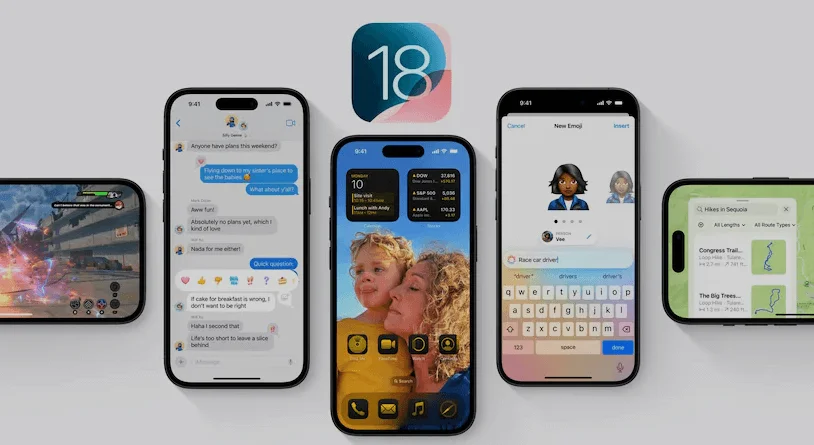In 2024, Motorola has introduced two exciting flip-style foldable phones: including the Razr and the Razr+. Each of them is a worthy successor for its predecessor, foredoomed to receive numerous enhancements: first of all, both models are provided with the latest 2.5K HD cover displays, improved water resistance, and significantly upgraded camera systems. Given that the original Razr costs $700 and the Razr+ $1,000 the final decision all depends on which one offers the most value to the customers. So let us go into the details of each in order to assist you to make the right decision.
Design And Display
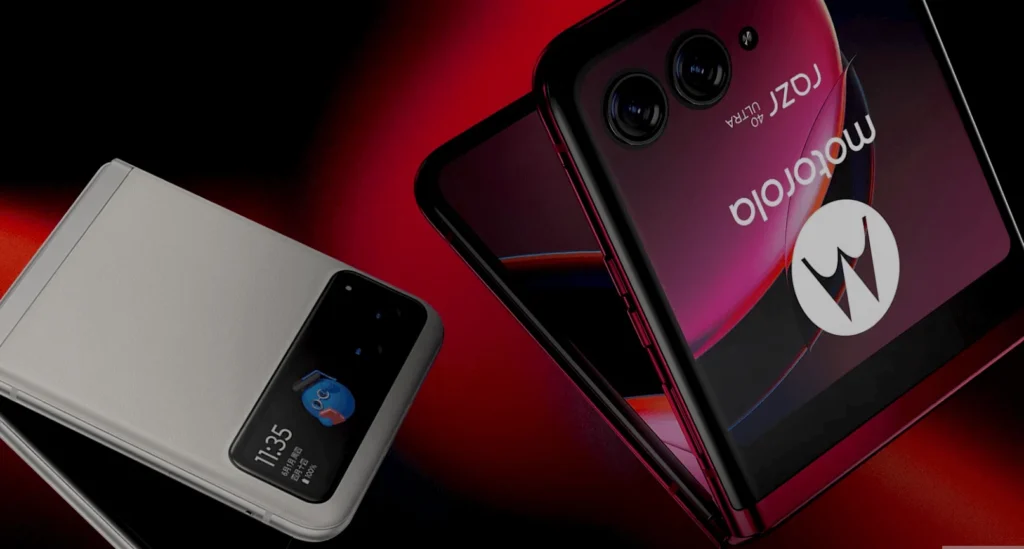
Motorola Razr (2024)
Motorola Razr (2024) is also a nice fit for people who wish to own a foldable phone but do not necessarily wish to spend a lot of cash. It has got Aluminum body, Eco leather back, and the front part is made of glass so it is attractive and strongly built. The most reported difference in the designs is the increased size of the 3. A more practical 6-inch cover display allows users to view notifications, tweak widgets or controls, and briefly control some applications. The primary screen and the largest is a 6. 9-inch pOLED panel with support of 120Hz refresh rate that creates natural and vivid picture.
Pros:
- Affordable pricing at $700.
- Functional 3.6-inch cover display.
- Good battery life with a 4,200mAh battery.
Cons:
- Slower 30W wired charging.
- Mid-range MediaTek Dimensity 7300X processor.
- Basic camera system with limited versatility.
Motorola Razr+ (2024)
The Motorola Razr+ (2024) is another device that elevates itself with the design and some of the many features. It has the same level of construction to the normal Razr but it comes with an almost border to border 4-inch non-touchscreen outer display. This is much larger, enabling it to be used in many more interactive and fun ways to a larger extent. The main display is also a 6. But for the one with a larger pOLED display, it measures 9-inches with 165Hz refresh rate for even smoother scrolling and gaming.
Pros:
- Almost edge-to-edge 4-inch cover display.
- Faster Qualcomm Snapdragon 8s Gen 3 processor.
- Improved camera system with a telephoto lens.
Cons:
- Higher price tag at $1,000.
- Only marginally better battery life despite the smaller 4,000mAh battery.
Performance And Battery
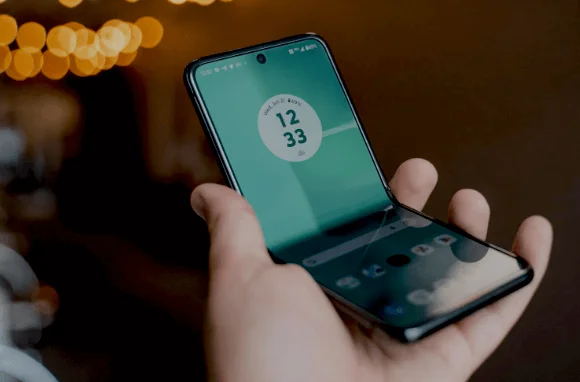
In the area of performance, these two models differ from one another. The Razr+ features the snapdragon 8s Gen 3 chip coupled with 12 gigs of RAM. This composition makes it responsive to the power user level and gamers which is ideal for such usage. The zweites without ‘pro’ is equipped with MediaTek Dimensity 7300X chip with 8GB of RAM, sufficient for all day use but lacks the firepower for heavy usage.
Concerning their battery life, these two phones are a marvel, easily running a day on a full charge. The Razr gets a slightly larger 4,200 mAh battery, while the more powerful and larger Razr+ has a 4,000 mAh battery. Though, the Razr+ comes with support for quick 45W fast charging through the USB port if you prefer charging your battery through the wired.
Camera Capabilities
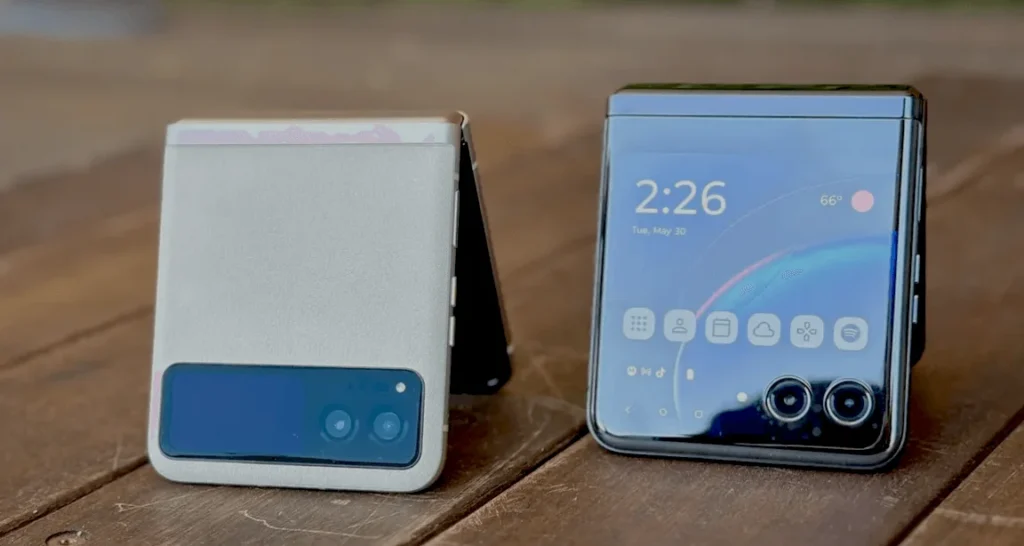
When it comes to cameras, the Razr+ holds a clear advantage. It also include a 50 MP primary camera with optical image stabilization (OIS) while the other module is a 50 MP telephoto camera with 2 x optical zoom. Such arrangement provides more opportunities for shooting and outperforms in such criteria as low light sensitivity and zoom. On the other hand, the normal Razr has a 50 MP primary and a 13 MP ultra-width lens which is quite standard but unsuitable for every need compared to the Razr+.
The phone has the same 32MP frontal shooter, and by folding it, you can use the primary camera even when the phone is closed, which will provide better image quality.
Software And Updates
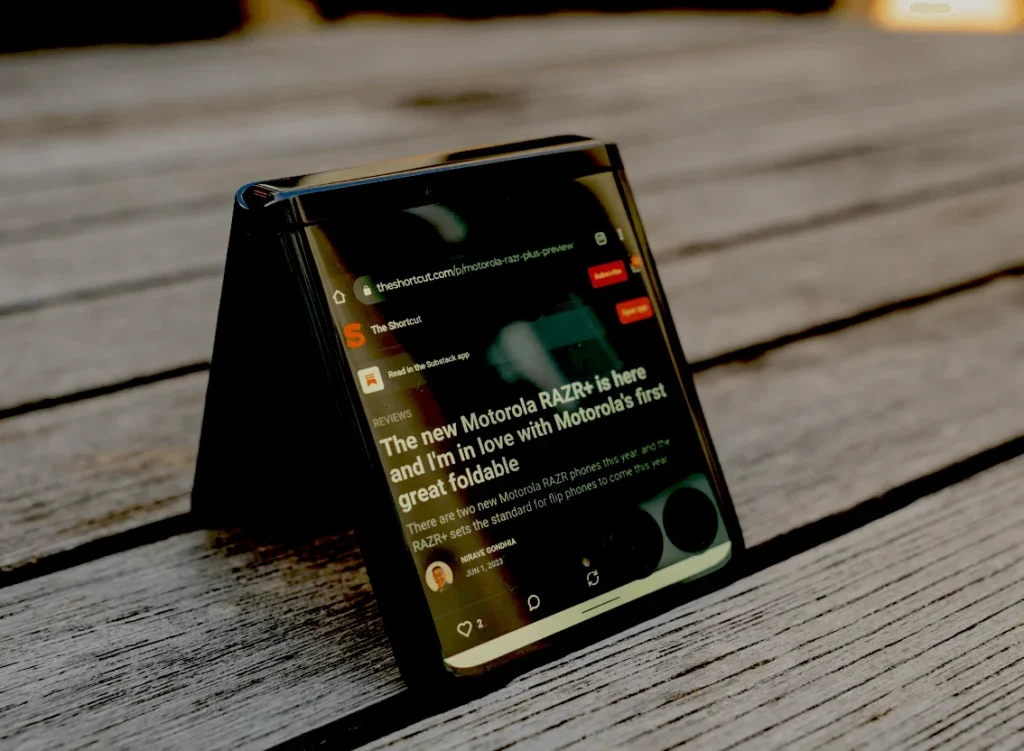
Both the Razr and Razr+ run on Android 14, offering a clean and intuitive user experience without unnecessary bloatware. Motorola’s software implementation is well-regarded, providing useful features like customizable cover screens and gesture controls.
However, one downside is Motorola’s update policy. Both manufacturers guarantee that the phones will receive three significant firmware updates based on Android and four years of security updates. Although this is acceptable it is far from what offers longer support period like Google and Samsung among other companies. Prior to the release of the Moto G, Motorola has always been a little lagging in its update processes, this could be an issue for the user who prefers a more frequent update of his operating system.
Conclusion
Motorola Razr and Razr+ are two interesting flip-style foldable phones which are different form their predecessors and have their benefits. Comparing both phones, it is evident that each has its advantages and disadvantages, and therefore the last factor depends on the individual and the means at his disposal.
All in all, I believe that Motorola Razr+ directly aimed at those individuals who are willing to spend extra to get better experience smoother operations, and enhanced camera quality. The almost border-to-border single 4-inch cover screen, the quicker Qualcomm Snapdragon 8s Gen 3 chip, and a telephoto lens makes it a more augmented and superior gadget.
The Motorola Razr, on the flip side, is a decent choice for those on a tight budget providing a utilitarian 3. Big RAM support of 6 GB, adequate battery backup and finally slightly cheaper than MacBook Air having a 6-inch cover display.
However, both phones have issues; the charge is somewhat slow, and they may not receive software updates as frequently.
Out of the two mentioned phones, which do you believe is the most affordable? Would you like to spend more money to have the additional features incorporated in the Razr+, or would you like to save your hard-earned money and go for the Razr? Please do share your views and let us will have a discussion.

